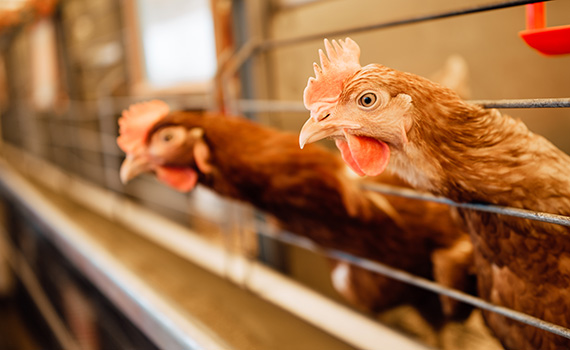How effective IBV surveillance can prevent ‘overvaccination’
Consistent surveillance and analysis of infectious bronchitis virus (IBV) at poultry production facilities can guard against “overvaccination” — where too much vaccine virus in the environment causes a rolling reaction in flocks.
That’s the view of Rodrigo Gallardo, DVM, PhD, professor of poultry medicine at the University of California–Davis.
Gallardo told Poultry Health Today he recommends surveillance of birds throughout the year for both broilers and layers in order to catch different age groups, with 30 samples the “magic number” in terms of being able to make accurate conclusions about the epidemiology of IBV on sites.
Dealing with excess circulating virus
While surveillance using analysis methods such as quantitative and qualitative real-time polymerase chain reaction and sequencing technologies can help in understanding how the virus is changing, it can also show when vaccination has been applied beyond its usefulness, Gallardo said.
If producers find that birds have not developed an immune response to clear out the virus, it may be the result of a rolling reaction due to an excess of virus in the environment, he explained.
When virus serotypes are similar to the vaccine applied, it is particularly likely that overvaccination is the issue, and at this point adding more vaccines may not be the best approach.
“Whenever you do surveillance and you start getting results that are similar to the vaccine that you applied…that might be telling you that you’re overvaccinating,” he said.
“And according to that, you need to start pulling vaccines one by one, and then try to check what happens clinically.
“Unfortunately, there’s no way of pulling out the vaccine and knowing that it won’t cause a clinical problem, so you need to be really careful and make decisions that are informed by your surveillance in order to address vaccination problems.”
Increasing tools’ effectiveness
On the US West Coast, different vaccine programs are used in summer and winter, Gallardo said, which allows producers to keep IBV in check, with low variation and low amounts of virus in the environment.
“Vaccines are tools. So you use them whenever you need them, and it’s very common to see in producers all over the world that they have an IBV problem, and they add a vaccine to their vaccination program, usually a different genotype…to generate cross-protection,” he continued.
“They elevate clinical signs, but then they never do surveillance in order to pull that vaccine out.
“That’s something that we need to emphasize. If we want to keep the tools that we have right now available and useful for the future, we probably need to use that
Posted on December 15, 2022
 We’re glad you’re enjoying
We’re glad you’re enjoying














